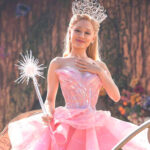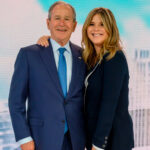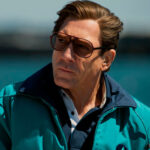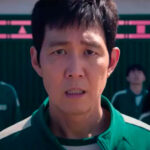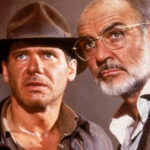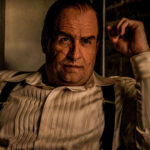
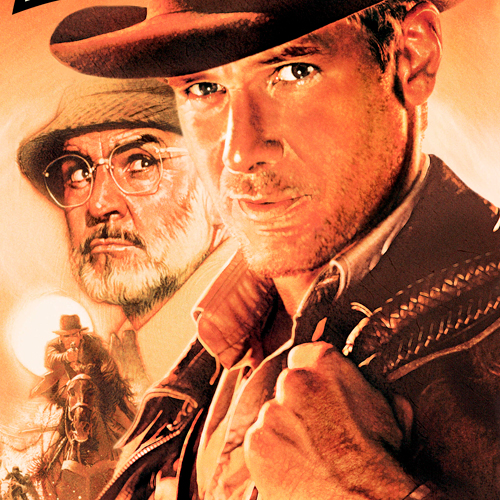
“Indiana Jones and the Last Crusade” is the third chapter in the iconic adventure saga created by George Lucas and Steven Spielberg. Released in 1989, the film continues the thrilling journeys of the archaeologist and adventurer Indiana Jones, played by Harrison Ford. This time, Indy embarks on an epic quest to find the Holy Grail, a legendary artifact that, according to legend, grants eternal life. The plot unfolds with a storyline that blends intense action, historical puzzles, and a touch of humor.
The film is notable not only for its engaging plot and exciting action scenes but also for the chemistry between Harrison Ford and Sean Connery, who plays Indy’s father. In this text, we will explore some of the most fascinating trivia about the production, cast, and behind-the-scenes aspects that make The Last Crusade one of the most memorable adventures in the franchise.
1 – SPIELBERG’S FAVORITE
If you ask parents with more than one child who their favorite is, the usual answer is that they “love them all equally.” Although it is widely recognized that there is always a preferred child, parents often avoid revealing this preference to prevent conflicts or trauma. However, Steven Spielberg, the creator of the Indiana Jones franchise, has not hesitated to express his personal preference. He has stated several times that “Indiana Jones and the Last Crusade” is his favorite film in the iconic adventurer series.
2 – YOUNG INDIANA
The film begins with an adventure from Indiana Jones’ teenage years, exploring his origins and the quest for the Cross of Coronado. Although the young actor does not closely resemble Harrison Ford, the role of young Indiana Jones was played by the promising River Phoenix. Phoenix’s casting was done by Ford himself, who was impressed by the young actor’s performance in “The Mosquito Coast” (1986).
Interestingly, River Phoenix revealed that, instead of basing his performance on Indy’s mannerisms, he focused on imitating Harrison Ford. To achieve this, he spent hours observing Ford off-screen to capture his posture, behavior, and vocal tone.
3 – THE FILM ALMOST TOOK PLACE IN A HAUNTED MANSION
During the development of the script, Steven Spielberg and George Lucas encountered disagreements that significantly altered the film’s direction. Initially, George Lucas proposed a version of the film with a more horror-oriented theme, set in a haunted mansion. Although a draft of the script was written, Spielberg rejected the idea, feeling it was too similar to “Poltergeist.” Lucas then suggested a story called “Indiana Jones and the Monkey King,” written by Chris Columbus, known for “Gremlins” and “The Goonies,” which had Indy searching for the Grail in Scotland, facing a ghost, only to discover that the Fountain of Youth was in Africa.
Spielberg did not like this proposal and began new discussions with Lucas, who wanted the focus to be on the Holy Grail, keeping the element of immortality present since the early drafts. Spielberg, in turn, proposed including Indy’s father as a central part of the plot. After several revisions, the script finally reached its definitive version.
4 – SON OF JAMES BOND
Remember when online forums used to debate which cinema character was better, Indy or James Bond, and someone always argued, “It’s Indiana Jones because he was trained by Bond”? Well, in reality, the choice of Sean Connery for the role of Dr. Henry Jones followed a similar logic. Spielberg had always dreamed of directing a 007 film, but that became almost impossible due to his management of a similar franchise.
So, he joked with George Lucas, “What if Indy were James Bond’s son?” The idea turned out to be so irresistible that Lucas agreed. Connery, besides acting, made several suggestions and improvisations that were so brilliant and authentic that the creative team had to revise the script to incorporate and adapt his ideas into the final cut.
5 – HARRISON FORD’S STUNT DOUBLE
At the peak of his physical fitness, Harrison Ford decided to fully commit to the action scenes. His determination even bothered his official stunt double, Vic Anderson, who nearly asked to take on some of the scenes himself. Although Anderson was joking, he emphasized in an interview that he could have been an excellent stunt double if he had wanted to.
A notable example is the sequence where Indy fights on top of a tank in the desert and gets caught by his satchel in the tank’s gun, getting squeezed against an embankment. Harrison Ford performed this scene alone, with the production team helping by throwing dirt on his face off-camera. However, the iconic scene of the jump from the moving horse to the tank was executed by Vic Anderson.
6 – OVER 2,000 RATS
Filming the catacombs of Venice brought several challenges, the main one being the use of rats. To ensure the safety of the cast and prevent the spread of diseases, the production hired no less than 2,000 baby rats, which were bred and trained in captivity specifically for the filming. This allowed the rats to interact with Harrison Ford and Alison Doody without causing bites or attacks.
To prevent issues if the rats were not available for all the scenes, the production made a deal with an insurer, which guaranteed the use of at least 1,000 rats per filming day. Additionally, to complete the appearance of the rodent crowd, the producers acquired around 1,000 artificial rats to mix with the real ones.
7 – DENHOLM ELLIOTT FILMED WHILE ILL
Dr. Marcus Brody, the film’s main comic relief, made his last physical appearance in the franchise in this production. He would later be referenced in “Indiana Jones and the Kingdom of the Crystal Skull” (2008), where his statue is decapitated by villains in a campus accident. Although the character was known for his cheerful and humorous spirit, actor Denholm Elliott faced significant challenges during filming.
Diagnosed with HIV in 1987, Elliott developed AIDS shortly before the start of filming. Despite the difficulties and his deteriorating health, he continued to perform his role with dedication, even facing tough days during the shoot.
8 – THE SCENE WHERE INDIANA MEETS HITLER
In the scene where Indy infiltrates the Nazis to recover his father’s diary and ends up meeting his greatest enemy, dictator Adolf Hitler, during a rally, Spielberg instructed all the extras to cross their fingers while performing the Nazi salute, thereby disarming the gesture and taking it out of context.
Being from a Jewish family, Spielberg is keen on depicting the horror of Nazism in his works. Additionally, it’s interesting to note that all the Nazi uniforms used in the film are authentic, not replicas. They were purchased at an auction by the film’s costume designer.
9 – FAKE SEAGULLS
One of the most iconic moments not only of this film but of the entire franchise occurs when Indy and his father are chased by a plane on the beach. Out of ammunition and with the field clear for the enemy, Dr. Jones Sr. pulls out an umbrella and runs toward the seagulls, which, when they take flight, get caught in the plane’s engines, causing it to crash.
To create this scene, the production couldn’t use real seagulls because they are wild birds and cannot be trained. Instead, they opted for trained white pigeons, which flew as needed without putting Sean Connery in danger. Another memorable scene between Indy and his father occurs in a dirigible, where the dialogue was filmed under conditions of illusion. Due to the intense heat in the studio on the filming day, which made it difficult for the actors to stay in their suits without excessive sweating, the scene was shot with the actors wearing only the tops of their formal outfits and underwear, hidden by the dirigible’s table.
10 – MARION’S FATHER
Credited only as “Fedora,” since he is the adventurer who gives the famous hat to Indiana Jones, Richard Young’s character did not have a fully developed backstory, being named after the hat and serving as an inspiration to Indy. However, he nearly became a much-talked-about character in the franchise: Abner Ravenwood.
For those who don’t remember, Abner is mentioned in the first and fourth films as Marion’s (Karen Allen) father, Indy’s wife, and Mutt’s (Shia LaBeouf) mother. In early versions of the script, he was credited as Abner but ended up becoming “Fedora” as the script went through various revisions.
“Indiana Jones and the Last Crusade” continues to captivate fans with its perfect balance of adventure, humor, and history. The film’s trivia reveals how innovative and challenging the production was.
From the choice of actors to creative solutions for the most iconic scenes, every detail contributed to creating a memorable cinematic experience. Spielberg’s skill in combining action with engaging storytelling, along with the chemistry between the cast, ensured that “The Last Crusade” became a timeless classic in the franchise.
